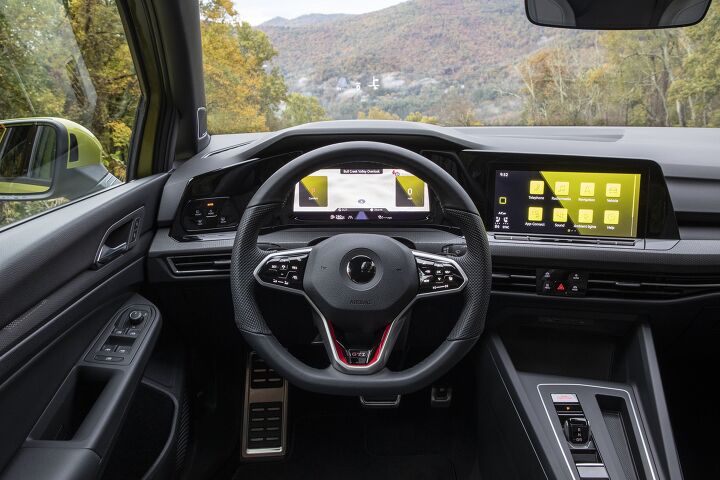
Volkswagen has seen sweeping criticisms for moving away from physical switchgear and has apparently learned a valuable lesson as a result. The brand has promised that future models will be reintroducing traditional buttons, including EVs prioritizing minimalist designs.
This is straight from the mouth of Volkswagen design chief Andreas Mindt, who recently told Autocar that the company is keen to correct past mistakes.
“From the [ID.2 and onward], we will have physical buttons for the five most important functions — the volume, the heating on each side of the car, the fans and the hazard light — below the screen,” stated Mindt. “They will be in every car that we make from now on. We understood this.”
“We will never, ever make this mistake any more. On the steering wheel, we will have physical buttons. No guessing any more. There’s feedback, it’s real, and people love this. Honestly, it’s a car. It’s not a phone: it’s a car.”
While VW was among the first legacy automotive brands to truly embrace the current trends (e.g. all-electric vehicles and minimalist interiors devoid of buttons), this has become an industrywide issue. Automakers have leaned increasingly on touchscreens and spartan interiors because they’re cheaper to produce and the automotive sector has been laser focused on maximizing per-vehicle margins rather than sales volumes in recent years.
However, the above also meant Volkswagen was encountering pushback from consumers before a lot of the other brands. The increasing digitization of cars has come with all sorts of compromises, with vehicle control being at the forefront. Drive-by-wire controls haven’t been popular with drivers because they offer limited (and artificial) feedback, connectivity features have allowed vehicles to harvest information on their owners, and touchscreens have encouraged the industry to try and abandon physical buttons and knobs.
The latter issue has made basic vehicle controls much more taxing and have arguably sabotaged some otherwise sound car designs. For example, Volkswagen’s GTI and Golf R have long been considered one of the best performance values on the global market. However, the redesign of the Mk8 resulted in VW supplanting physical buttons and knobs with haptic feedback sensors and touchscreen inputs. They were broadly disliked and ultimately sullied the image of the related products.
Ironically, the haptic feedback “buttons” found on the latest VW models are significantly better than previous iterations. But physical switchgear is inarguably the best when it comes to ease of use and are likewise safer than touch controls.
From Autocar:
Mindt said VW will continue to offer cars with touchscreens, in part due to new legal requirements that, as in the US, will require all cars to feature a reversing camera.
“There are a lot of functions you have to deliver in certain areas, so the screen will be big and you will find a lot of HMI [human-machine interface] contents in the depths of the system,” he added. “But the five main things will always be on the first physical layer. That’s very important.”
We’ve heard similar statements from other automakers in recent months, particularly among the European brands. The design boss from Mercedes-Benz is now on record as saying that large touchscreens are luxurious in of themselves and that the brand would need to rethink how they’re implemented in order to impress their clientele. But we’ve seen plenty of automakers starting to rethink modern trends that, frankly, haven’t resonated with consumers.
Hopefully, the above means we’ll see car companies pivoting back to more traditional designs that are more intuitive. Volkswagen is certainly taking a step in the right direction. However, the fact that basically every brand sees automotive connectivity as highly profitable means that large interior screens will persist. Companies may say that modern vehicles shouldn’t be like phones. But they also intentionally designed them to be that way under the assumption that it would make money.
[Image: Volkswagen Group]
Become a TTAC insider. Get the latest news, features, TTAC takes, and everything else that gets to the truth about cars first by subscribing to our newsletter.


